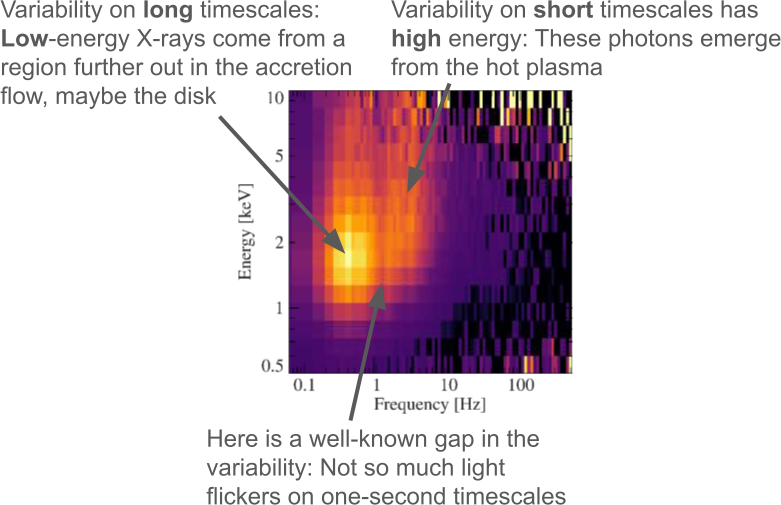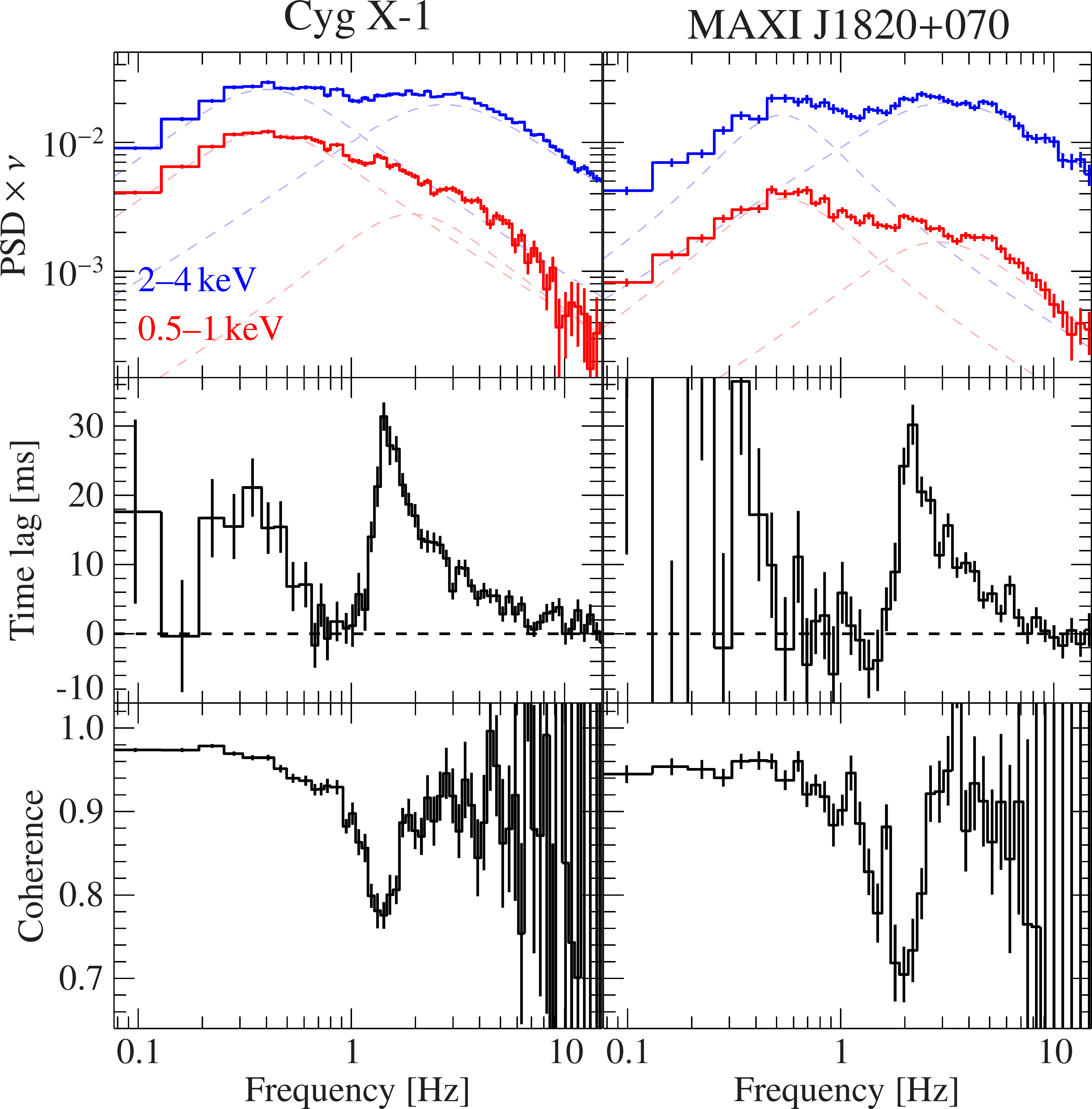NICER / ISS Science Nugget
for August 15, 2024
How does a black hole flicker?
In the late 1960s and early 1970s, shortly after the discovery of the first black-hole system, Cygnus X-1, it was realized that the immediate surroundings of the black hole "flicker" in X-ray light - the emission brightens and dims rapidly and in an aperiodic fashion.
In black-hole binaries, the accretion of matter from a stellar companion onto the black hole leads to the formation of a disk, in which gravitational potential energy is efficiently converted into radiation. The strongly variable X-rays, detectable with NICER, originate from two main processes: low-energy X-rays come from the accretion disk and high-energy X-rays from a hot plasma (the "corona") located somewhere in the immediate vicinity of the black hole. A recently published peer-reviewed paper in the European journal Astronomy & Astrophysics, titled "A spectral-timing look at low energies with NICER" by O. König (FAU Erlangen, Germany) and collaborators, is the latest in a series of papers on the variability of Cyg X-1, exploring the origins of the variable emission processes.
Using NICER's extensive archive of Cyg X-1 observations, the authors examined connections between variability from the low-energy accretion disk and high-energy coronal plasma emissions - something that had not been possible in this way prior to NICERŐs launch given its unique timing capabilities for low-energy X-rays. The team identified two broad variability components, which flicker over timescales centered on roughly three times per second and once every five seconds, respectively. They argue that these components likely emerge from distinct physical regions in the accretion flow. By investigating the energy signature of the variability, they established an association of the fast variability component with the hot plasma; for the slower variability, a lower-energy process - presumably within the accretion disk - is responsible. These novel results place strong constraints on theoretical models of the physics of accretion flows. Interestingly, on one-second timescales in between the two processes, photons in the energy band of the hot plasma arrive 30 milliseconds later than photons from the disk. Moreover, the authors see a drop in the "coherence," a proxy for the interconnectedness of the physical processes. Such an abrupt change in the time lag and coherence is challenging to interpret but suggests a distinct underlying mechanism that creates this variability. The authors showed that this phenomenon is likely connected to similar features that have been observed previously at other timescales and from other black-hole binaries observed by NICER. Growing evidence points to an unknown phenomenon common to these systems, and work is ongoing to understand its origin.


Left: Cygnus X-1 shows energy-dependent variability on different timescales. Here, the variability is shown in the form of a photon-energy-resolved power spectrum, a measure of brightness fluctuation amplitudes as a function of their frequency. (Credit: König et al. 2024)
Right: Flickering properties of two black-hole binaries. The top panels show power-spectral densities (PSD) in two photon energy bands (higher-energy in blue, lower in red). A novel feature emerges at the overlap of two broad variability components: very abruptly at around a frequency of 1 Hertz, the arrival times of hard and soft photons change by 30 milliseconds (middle panels). At the same time, the coherence, a measure for the linear correlation of the signals, drops (bottom panels). The authors also found this phenomenon in other black holes in our Galaxy, such as MAXI J1820+070 (right side). (Credit: König et al. 2024)
<< Previous
Main Index
Next >>